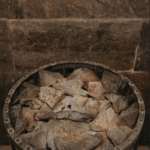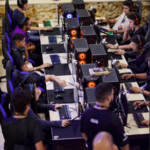Padel – a fast‐paced racket sport combining elements of tennis and squash – has exploded in popularity across Europe. In the Netherlands, this surge is often referred to under the banner “NLPadel.” It is not a single company or software product, but rather an umbrella term for the Dutch padel ecosystem and its modern innovations. Officially, padel in the Netherlands is organized by the Koninklijke Nederlandse Lawn Tennis Bond (KNLTB), which runs the NLPadel.nl portal. In practice, “NLPadel” signals how the sport is being promoted, played, and even enhanced with technology in the Netherlands.
Padel is played on a smaller court surrounded by walls, typically in doubles. The KNLTB describes padel as “a racket sport with much in common with tennis and squash” that is “spectacular, fast and dynamic” thanks to its wall play. This strategic, high-fun sport is noted for allowing players of different skill levels to enjoy long rallies together. Padel courts are about half the size of tennis courts, which makes padel games fast-moving and accessible – beginners can often start playing quickly, while skilled players enjoy tactical depth.
Padel’s Popularity in the Netherlands
Padel’s growth in the Netherlands has been nothing short of explosive. An official 2024 report by the KNLTB (the Dutch tennis and padel governing body) found over 311,000 registered padel players in the country – an 18% jump over the prior year. Remarkably, more than 110,000 of those players were women (about 35.6% of the total). The sport’s appeal spans all ages: the largest groups were in the 18–34 age range, but even players 65 and older are joining in growing numbers.
Infrastructure has expanded accordingly. By the end of 2024 the Netherlands boasted 2,828 padel courts across 627 locations – several times the number of five years prior. For example, Leisure World Padel in Dronten alone has 17 courts, reflecting how clubs are scaling up to meet demand. These figures make the Netherlands one of the most padel-rich countries in Europe. Dutch media aptly described padel’s journey as moving “from hype to a mature sport”. Today, major cities like Amsterdam, Rotterdam, and Utrecht all have multiple indoor and outdoor padel clubs, while even smaller towns are adding courts each year.
The NLPadel Platform and Concept
The term “NLPadel” does not refer to a single company or venue. Instead, it is essentially shorthand for Nederlandse Padel – the Netherlands’ padel community as organized by the KNLTB – and for the new technology-driven approach to the game that many Dutch clubs and coaches are taking. In fact, the International Padel Federation lists the Dutch tennis association (KNLTB) as the national padel body, with NLPadel.nl as its official website. The KNLTB’s own site is even titled NLPadel.nl and greets visitors with “Welkom op NLPadel.nl! Op deze website vind je alles over padel: de snelst groeiende sport van Nederland.” (Welcome to NLPadel.nl! On this site you’ll find everything about padel – the fastest growing sport in the Netherlands).
Thus, NLPadel is essentially the KNLTB’s padel platform. It includes features like national tournaments, ranking lists, training programs, a court-finder tool, and news. It also emphasizes inclusivity – for example, the KNLTB actively promotes women’s padel growth through NLPadel. In other words, when sources speak of “NLPadel,” they usually mean the thriving padel movement in the Netherlands, with its official backing and community infrastructure.
Some media and blogs go further and treat NLPadel as a cutting-edge sports concept. For instance, one article describes NLPadel as “the movement and structure of padel in the Netherlands,” encompassing local tournaments, clubs, coaching programs, and new technologies added to the sport. Importantly, this is not a formal corporate entity, but a convenient label for how Dutch padel is evolving. Another tech-oriented write-up calls NLPadel a “revolutionary training and performance framework” that blends advanced sports psychology (NLP), AI analytics, wearables, and neuroscience techniques. While that description uses marketing language, it highlights a real trend: Dutch padel coaches are increasingly adopting high-tech tools and mental training methods.
In summary, NLPadel refers to the Netherlands’ padel ecosystem – the whole network of players, clubs, events, and official support – plus the modern, tech-savvy style of training emerging within . It is not a standalone facility or app; it’s a concept that draws on the country code “NL” and the word “padel.” (To avoid confusion: the “NLP” mentioned in some NLPadel articles stands for Neuro-Linguistic Programming, a mental training technique, not natural language processing in AI.)
Innovation and Technology in NLPadel
One of the defining buzzwords around NLPadel is innovation. Many Dutch coaches and clubs are experimenting with technology to enhance padel training and play. This includes using data analytics, high-tech gear, and performance tracking. For example, an industry article highlights four “pillars” of NLPadel: mental coaching (NLP), AI-driven analytics, wearable sensors, and neuroscience-based training. Another source lists “smart technology” and “data tools” as key components of NLPadel, such as AI coaching apps, smart rackets, motion sensors, and real-time biofeedback.
In practical terms, this means players can now use smartphone apps and sensors to get instant feedback on their game. For instance, smart rackets with built-in accelerometers and impact sensors can measure shot power, spin, and contact points during play. Video analysis systems – sometimes powered by artificial intelligence – can review match footage to suggest strategic improvements. Wearable devices (like heart-rate monitors or fitness bands) help track a player’s physiology (heart rate variability, reaction time, etc.) during and after matches. As one padel‐equipment blog explains, “video systems, wearable devices, and smart sensors track player movements, providing real-time data on performance metrics such as shot speed, spin rate and positioning”. This data lets coaches and players pinpoint weaknesses and monitor progress scientifically, rather than by guesswork.
Technological innovation in padel is still emerging, but its presence is growing. For example, custom padel court lighting and connectivity allow real-time streaming of matches, and some clubs have installed high-speed cameras for instant replays. On the equipment side, manufacturers are already selling rackets and grips with embedded chips that sync to apps. At many Dutch clubs, players can log their match statistics (points won, shot types, unforced errors) through platforms integrated with club management systems. All these developments are often grouped under the NLPadel umbrella, reflecting a desire to make padel “data-driven.”
Key technological themes in NLPadel include:
-
Data analytics and AI: Using video tracking and machine learning to analyze matches and propose tactics.
-
Smart rackets and wearables: Rackets with built-in sensors, and player wearables (wristbands, heart-rate monitors) that collect performance data in real time.
-
Digital coaching apps: Mobile apps that guide training drills, record stats, or simulate opponents based on aggregated data.
-
Interactive courts: Courts with digital scoring, live-stat displays, or even smart floor surfaces that sense ball bounces (some experimental) to improve training feedback.
By adopting these tools, Dutch padel clubs aim to help players improve more quickly and enjoyably. Younger players, in particular, appreciate being able to track their progress on an app or see their match heatmaps. This tech-friendly approach aligns with the Netherlands’ reputation for innovation. One analysis of NLPadel notes that in a country known for embracing innovation, “the use of AI and data tools in sports is a big attraction”.
Coaching and Mental Training
Alongside gadgets, NLPadel places heavy emphasis on advanced coaching methods. Dutch padel coaches are exploring sports psychology and individualized training as never before. Neuro-Linguistic Programming (NLP) – a psychological technique to improve mental performance – is one example. NLPadel aficionados talk about “cognitive training based on NLP,” where players learn to stay focused under pressure, manage nerves, and reinforce positive self-talk. In practice, this might involve mental visualization exercises before matches, and “anchoring” techniques to maintain confidence during play.
Physical coaching is also evolving. Drills and lessons are increasingly tailored to each player’s style, supported by the data collected through technology. A distinction has even been drawn between “traditional padel” and “NLPadel”: the latter uses “smart coaching” and personalized methods, rather than one-size-fits-all drills. For example, coaches may adjust training plans based on a player’s strengths and weaknesses identified through match stats. They might also incorporate cross-training (fitness, agility, and coordination exercises) guided by wearables data – for instance, optimizing cardio workouts if a player’s match heart-rate variability indicates room for improvement.
In short, NLPadel coaching covers both mind and body. The goal is to develop mentally resilient, strategically savvy players. One source summarizes NLPadel’s approach as focusing on “both mental and physical performance,” combining modern coaching tools with motivational programs. In tournaments and youth programs, coaches encourage players to set specific performance goals, use video replay to study tactics, and even apply brief on-court mindfulness techniques. This is a shift from how many amateurs in the past simply showed up and “played for fun.” Now, even recreational players can benefit from a more scientific and psychological approach to learning the game.
NLPadel Community, Clubs, and Competitions
A crucial part of NLPadel is its strong community and event calendar. The Netherlands now has dozens of padel clubs across its provinces. Many larger sports centers and tennis clubs have added padel courts; smaller entrepreneurs have opened dedicated padel halls. The clubs often organize weekly leagues, beginner’s clinics, and internal tournaments. Youth and junior padel programs are increasingly common, as well as women-only and mixed-league initiatives. For example, NLPadel promotes women’s leagues and aims to break down the idea that padel is a “men’s sport,” encouraging equal growth.
Nationally, the KNLTB coordinates formal competitions. There are city leagues, national interclub matches, and ranking tournaments culminating in league play-offs. NLPadel participants can earn official ratings and compete in age‐ and gender‐group championships. In fact, the Decathlon Premier Padel Rotterdam tournament (an elite international event) is hosted in the Netherlands, underscoring how far Dutch padel has come. Dutch pairs regularly compete on the world stage as well. These high-profile events bring more attention to the sport and inspire the next generation of players.
Clubs also embrace social aspects: “ladies nights,” family tournaments, and charity padel days are common. Community support is one of NLPadel’s pillars – the idea that padel is as much about fun and fitness as it is about competition. For instance, Dutch Padel Week and TopSpinPlaza’s open days attract casual players to try the sport. Even local governments have taken notice, funding padel courts and programs to keep residents active.
To summarize the community aspect: NLPadel isn’t just for pros. It’s about growing a nationwide network of players of all levels. One description of NLPadel notes “dozens of clubs across major Dutch cities” and regular events at local and national levels. Whether you’re in Amsterdam or a small town like Dronten, there’s likely an NLPadel facility or club near you. As one padel magazine observed, the Netherlands now ranks among the top countries in padel court density in Europe.
The Future of NLPadel
NLPadel is more than a passing trend – it represents how padel is maturing into a mainstream sport in the Netherlands. The combination of strong organizational backing (through KNLTB), a tech-savvy coaching approach, and a vibrant community means that padel will continue to grow. According to one blog, “NLPadel is leading the way in how modern sports can grow,” blending fun, fitness, and technology.
Looking ahead, we can expect NLPadel to expand its reach. More clubs will open and older sports halls will be converted to padel courts. Training methods will become even more data-driven, possibly incorporating virtual reality practice or AI-driven opponents. The KNLTB’s research-driven approach (using data on participation and court usage) will guide investments. Internationally, Dutch players may climb world rankings, and the Netherlands will likely host more major padel events (e.g. European championships, Premier Padel tour stops).
In practical terms for players and fans, NLPadel means easier access and more resources. Beginners can find local courts via the NLPadel website and book online; coaches can tailor programs with apps; fans can watch live-streamed matches with real-time stats (already a feature at some tournaments). The emphasis on community will also keep padel social – it remains true that padel is, at its heart, “more than a game,” fostering social connection.
In conclusion, “NLPadel” is simply the Netherlands’ padel scene – but one that’s dynamic and forward-looking. It’s not a particular facility or software, but an approach that combines official support with innovation. As one source puts it, NLPadel has become “more than just another version of the sport”. For anyone interested in padel, the NLPadel phenomenon means the game is everywhere in the Netherlands, enriched by new technology and a strong community spirit.
Key Aspects of NLPadel (as summarized in recent articles) include:
-
Official Structure: NLPadel is governed by the KNLTB (the Dutch tennis and padel federation), ensuring standardized tournaments and rankings across the country.
-
Advanced Coaching: Coaches use modern methods, including mental training (Neuro-Linguistic Programming) and personalized programs, to develop both the mind and body.
-
Smart Technology: The sport is embracing technology – from AI-powered analytics and smart rackets to wearable sensors and coaching apps – to give players real-time feedback on speed, spin, fitness, and tactics.
-
Community Growth: A rapidly expanding network of clubs and events means padel is easily accessible. There are dozens of clubs in major cities, youth and women’s leagues, national competitions, and international tournaments taking place in the Netherlands.
Together, these elements explain why “NLPadel” has become a household name among Dutch sports enthusiasts. The NLPadel movement is helping transform padel in the Netherlands into a smart, inclusive, and high-tech pastime that appeals to people of all ages.








